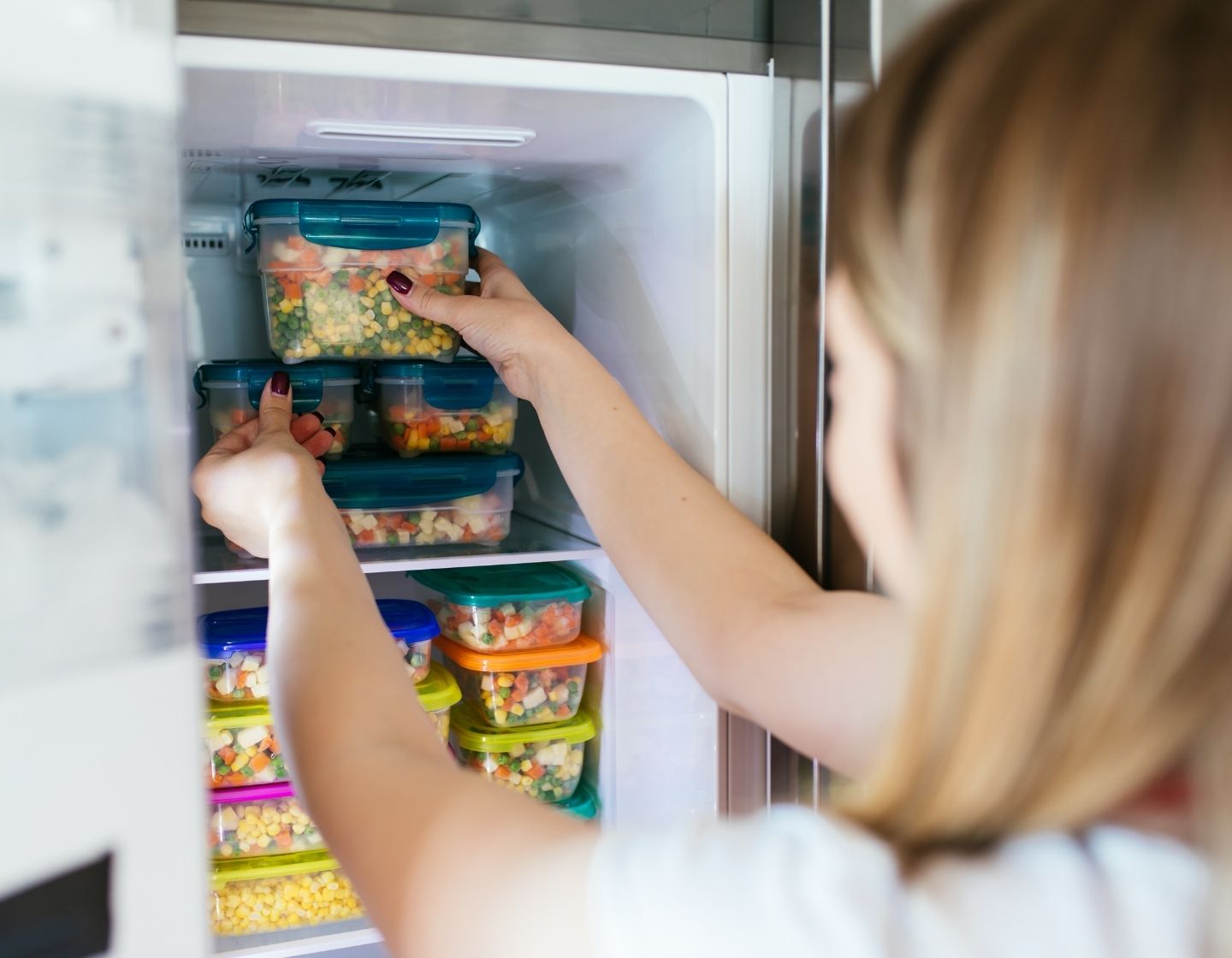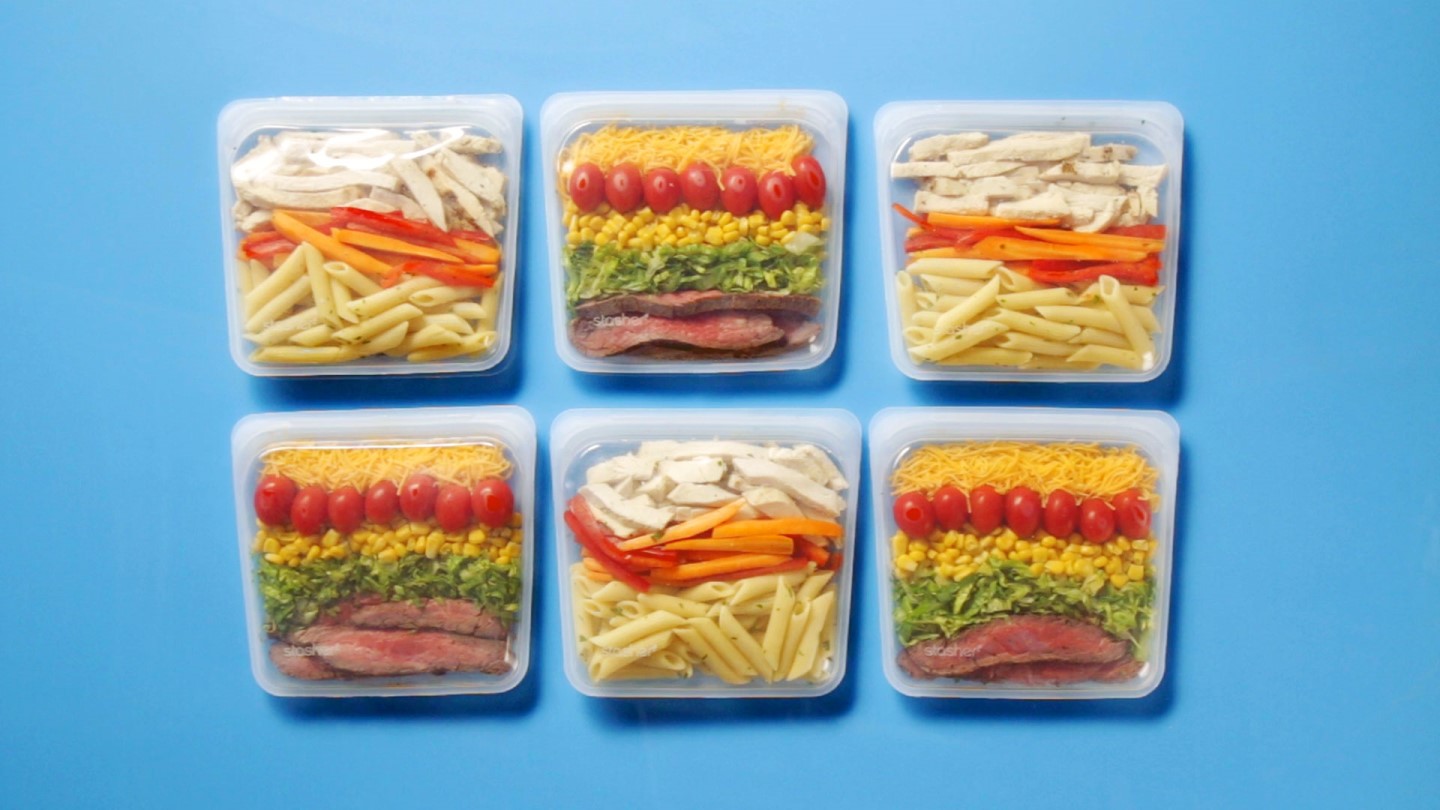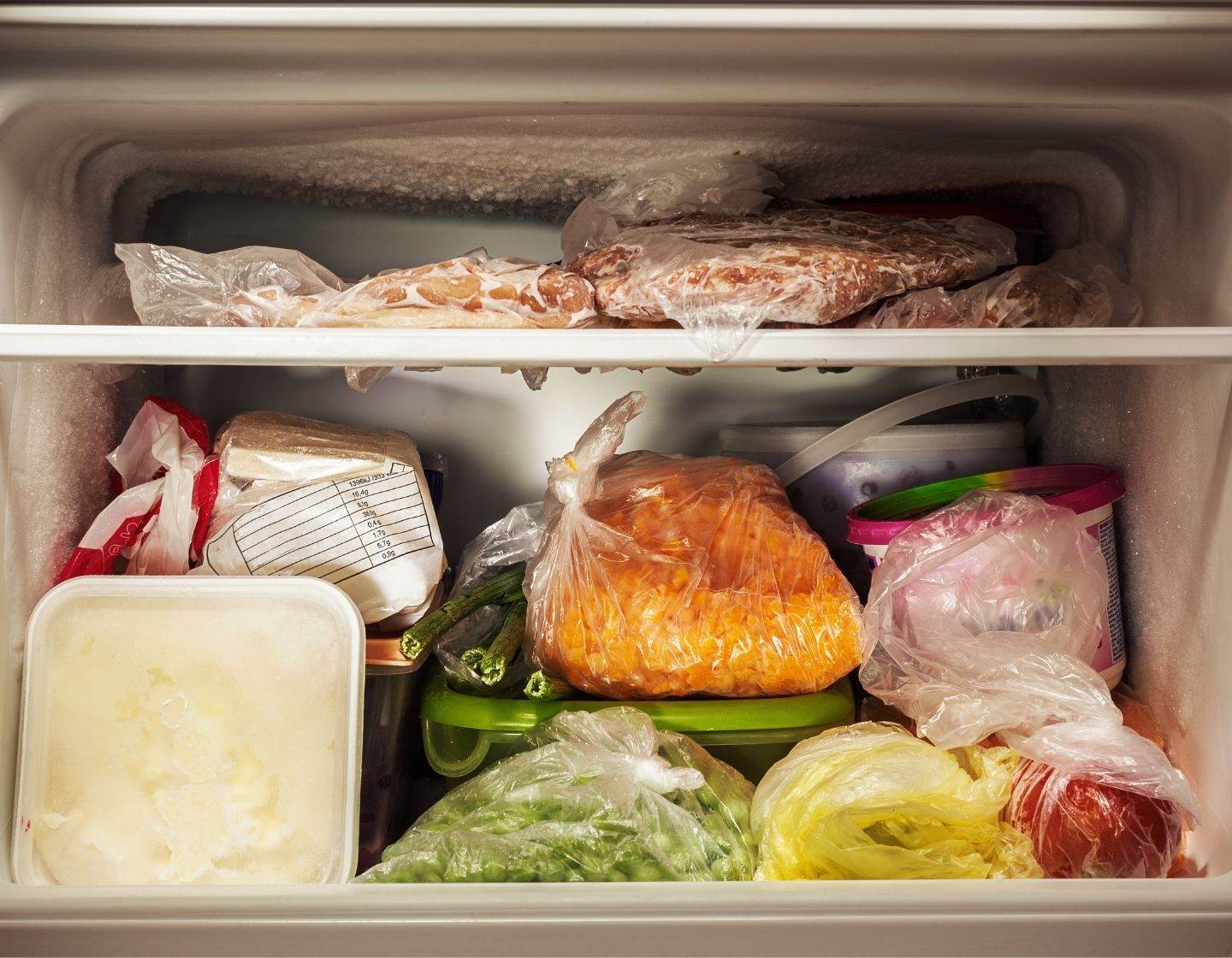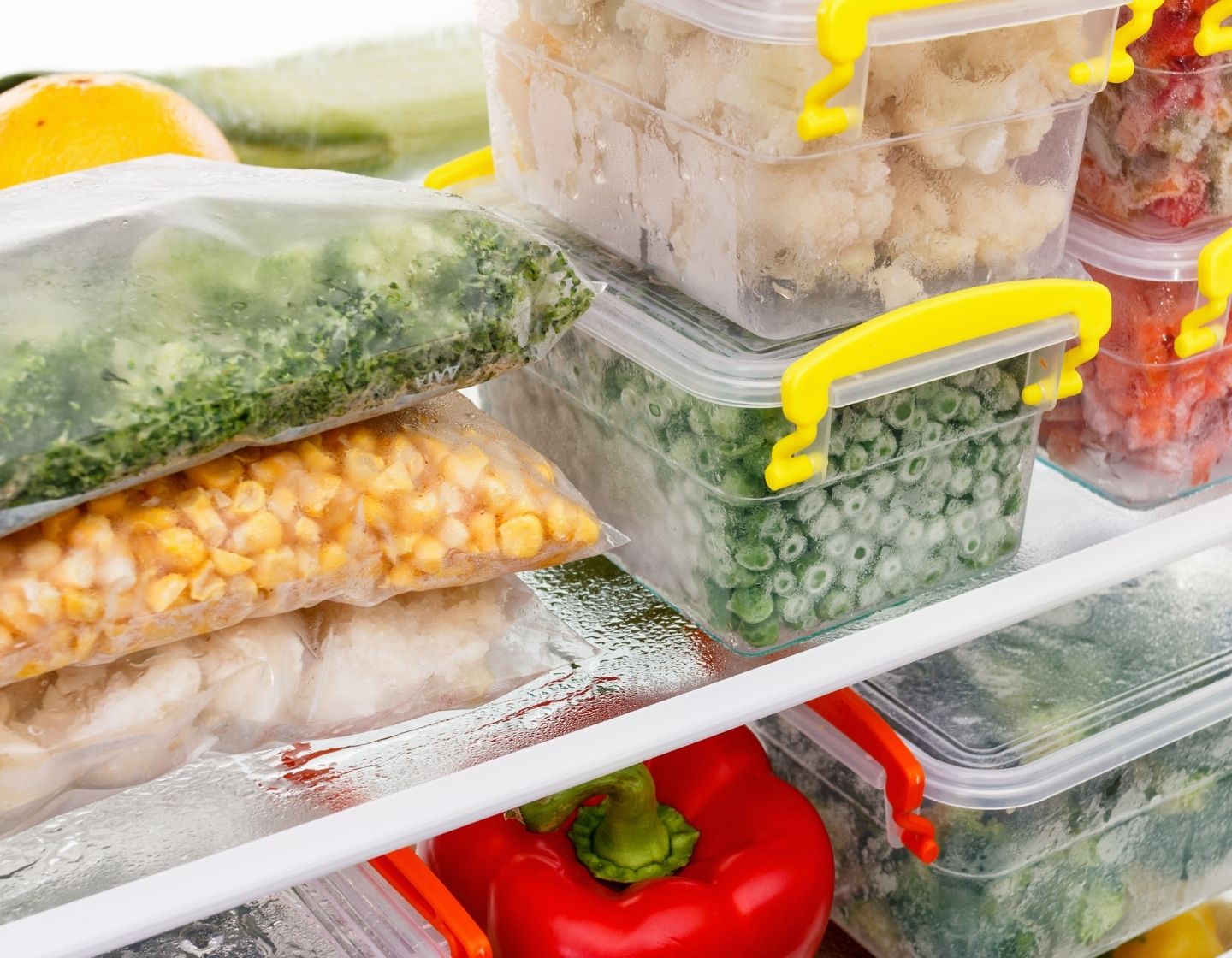Tips for filling up your freezer
WRAP found that on average, the UK wastes 9.5 million tonnes of food each year. This costs us over £19 billion and accounts for 25 million tonnes of greenhouse gas emissions. However, there’s a handy appliance in the kitchen that you may have overlooked when it comes to reducing your food waste: the freezer.
For many of us, it’s probably packed full of forgotten treasures, but with some top tips and careful organising, you could transform your freezer into a sustainable hub! With a bit of forward planning you can forget the dreaded “what should we have for dinner tonight?” conversation and pick a delicious dinner out of the freezer that you made last week. No mess and no fuss after a long day!
Meal prep isn’t just for the gym lovers
Freezer meals are incredibly handy when you just can’t be bothered to cook. Plus, they can avoid food waste and save you some pennies. You could spend a few hours on Sunday batch cooking one-pot dinners like lasagne or chilli and pop them in the freezer for a later date.
It doesn’t have to be a weekly task; you can do it monthly or whenever you have the time. Or you can double up the recipe when you’re cooking one evening and simply freeze half of it, it’s a 2-for-1 deal.
Top tip: ensure it is completely cool before you pop it in the freezer and that it’s piping hot when you reheat it.
But meal prep isn’t just for dinner. You can freeze banana bread and breakfast muffins too and grab one on the way to work in the morning when you’re running late.

Freeze components and individual servings
Depending on how many people you’re cooking for, it may be easier to freeze a whole dish or separate it into portions.
If you’re batch cooking for a family, you can put your whole dish in the freezer but if you’re only eating for one or two people, separate the dish into servings and pop it in a Stasher bag in the freezer. The Half-Gallon Stasher and Stand-Up Stasher bag are the perfect size for freezer meals.
Saving bits and pieces like pesto, sauces and odd bits of vegetables will reduce the amount of food you waste and means you use every penny you’ve spent, and even save you money in the future as you won’t have to nip to the shops for a sauce you forgot. The Sandwich Stasher bag is the perfect size for odd bits or a single serving size of dinner.
Saving these bits in glass jars or Stasher bags allows you to pick and choose what you need and construct your own meal with whatever you have in the fridge. For example, if you’ve got some mixed beans in the freezer, you can make a stew or burritos with your fresh ingredients that need eating up in the fridge.
Stasher bags are ideal for batch cooking as they can go straight from the freezer to boiling water, the oven and the microwave. You can also freeze bread. If your household can’t get through a loaf of bread before the use-by date, you can slice it up and store it in the freezer.
Top tip: don’t overestimate how good your memory is! Make sure you label everything that goes into your freezer so that you know what it is and how long it’s been there for. Marker pens wipe off Stasher bags easily.

How long can freezer meals last?
It does depend on the food but usually between three to six months is safe.
How to prevent freezer burn?
Freezer burn is a result of moisture loss. This causes frozen food to appear shrivelled and loses its taste and texture. They’re still safe to eat, but it may not be as tasty. To prevent this, wrap your food in an air-tight container before freezing it.
Do a freezer audit
We’ve all shoved stuff in the freezer and forgot about it but completing a regular audit allows you to stay on top of the food you have so you can reduce waste and reduce your shopping bill as there’s no need to buy more of what you’ve already got hiding.
We suggest making a list of everything in the freezer and working out what needs eating first. Then, you can make a meal plan for the next week or so, incorporating everything that needs eating up. This is super handy as you won’t have to worry about what to make for dinner each night or wasting anything.
How to complete an audit:
- Make a meal plan, prioritising the oldest items and the things you have lots of
- Ensure anything you have lots of isn’t on your shopping list
- Put the oldest items at the front so you notice it and you’re more likely to use it
- Use labels You can keep your list attached to your freezer, so you don’t have to open it up to know what’s inside. Or even a note on your phone would work.

Freeze your vegetables and herbs
We don’t always have a chance to eat all of our veggies before they go off, that’s normal. But freezing is an easy and efficient way to extend their life. Pre-chopping vegetables and popping them in a glass jar, beeswax wrap or Stasher bag inside the freezer is a great way to reduce prepping time in the kitchen. All you have to do is grab a handful and add it to your stir fry. Easy peasy, no waste and no time.
Some people recommend blanching vegetables before freezing them to preserve flavour, texture and colour. This involves immersing the vegetables in boiling water for a couple of minutes until softened, then immediately draining and submerging them in ice-cold water.
Simply pat them dry and transfer them to your air-tight container or wrap them in a beeswax wrap, which is a no-stress sustainable alternative to stubborn clingfilm (they can last up to one month in the freezer). Wrapping food tightly reduces exposure to air and moisture, preventing freezer burn. Don’t forget about your scraps either.
We suggest keeping a container of vegetable scraps as you cook. Once the container is full you can boil the vegetables to make a stock. Pour the stock into an ice-cube tray and store the perfect portion size cubes in the freezer. You’ll have readymade stock for future risotto, stews, you name it!
Soup, sauces and pesto can also be frozen using scraps as well. You can also freeze herbs using a similar method. Put your herbs into an ice-cube tray and pour olive oil over them and freeze. Pop them out and you’ll have herbs to use at any time. Or some cooks prefer to use butter by combining herbs with softened butter and wrap it in a beeswax wrap in the freezer.
Simply cut a slice off and pop it into your cooking. A little bit goes a long way! Only a little bit of prep when you have the time can save you tons of time and money in the long run, your future self will thank you for it.

Freeze your fruit
Fruit can be frozen too, but the process differs slightly. It involves slicing your fruit, removing the cores and stems, and placing the fruit on a baking sheet. Freeze the fruit like this for 2-3 hours (or until fully frozen) to prevent the pieces sticking together.
Once frozen, transfer the pieces into containers. We recommend Stasher bags as you can layer them on top of each other to maximise space in your freezer. You can use the fruit for baking, smoothies and nice cream, perfect for the coming Summer months. Even if it’s overripe, it can be salvaged and stored for another six to nine months.
Using Stasher bags also allows you to pack readymade smoothies inside, with all your favourite combinations of fruit and vegetables ready to be blitzed. Plus, freezing fruit also allows you to enjoy seasonal fruit all year long.
What food can’t I freeze?
Most things can be frozen but there are a few exceptions.
Dairy based sauces like mayonnaise tend to curdle. Although hard cheese like cheddar is safe to freeze when grated, the texture of soft cheese is likely to alter. Watery vegetables like cucumbers, tomatoes and lettuce will not fair well frozen either.
Storing food in groups can also help to organise your freezer, so you don’t lose anything at the back and forget what you’ve bought. For example, keep all fruits and vegetables in one compartment and ready meals in another.
Don’t forget, a full freezer is more sustainable as it needs less cool air to circulate, meaning less power! If your freezer is only half full, we recommend filling it up with water bottles or ice packs to fill the gaps. Sustainable freezers If you’re looking for energy-efficient appliances,
SaveMoneyCutCarbon has a variety of freezers in our Energy Efficient Appliances range to reduce your energy bills and cut your carbon footprint. Using our tips, your freezer can help you to reduce your food waste, meal prep time and energy bills. All you need to do is a bit of rearranging and time management! If you’re curious for more, read our sustainable tips for your fridge too.
Shop our range of Energy Efficient Appliances


